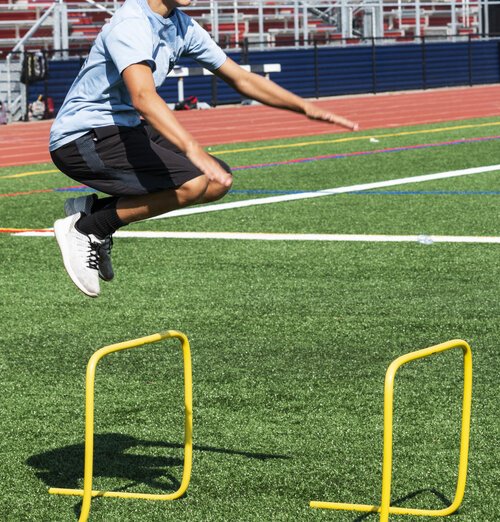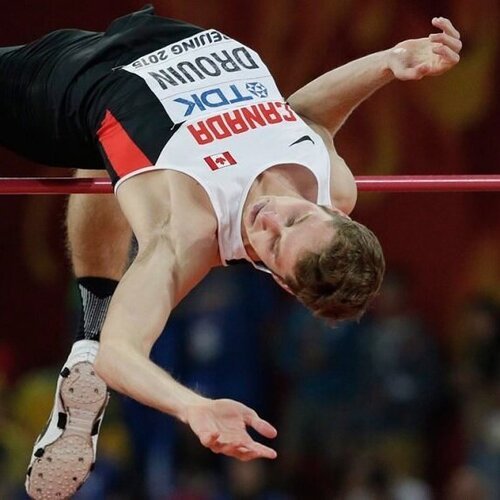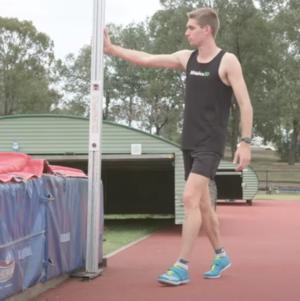Jumps
Free articles and resources for long jump, triple jump, and high jump coaches.
Australian Athletics is proud to share the replay of our Development of Triple Jumpers masterclass, held on 13 August 2025 with NCAA coach Keith Herston. This session delivers clear, practical insights for coaches on building long-term pathways for female triple jumpers, with lessons you can apply directly in training.
Why do hamstrings always seem to blow up just when things are going well? This quick, coach-friendly deep dive unpacks the real role of the hamstrings in sprinting, why they get overloaded, and—most importantly—how to train them smarter for both injury prevention and peak performance.
🎥 Includes a must-watch video breakdown, practical takeaways, and real-world coaching strategies to keep your athletes firing on all cylinders.
Watch a replay of this fantastic session, hosted by world class coach Nelio Moura, a veteran of seven Olympic Games. He shares key insights into high-performance jumps coaching, blending biomechanics, sprint development, accuracy training, and strength programming with real-world coaching applications.
Need a quick-reference guide for teaching high jump?
This pocket guide breaks down the technical model step by step—from approach to landing—so you can help your athletes maximise height over the bar.
🔖 Save this for your next session!
A well-executed approach run is the foundation of every successful high jump. In this article, we break down one of the most widely used tools in high jump coaching—the Intercept Point—and show you how to calculate, mark, and refine it for your athlete.
If you want your high jumper to run a more consistent curve, generate better takeoff force, and clear higher bars, this is the resource for you.
The presentation highlighted insights from a recent research paper relevant to the biomechanics of pole vaulting. The data-driven analysis offered fresh perspectives on improving key aspects of the approach run, take-off, and bar clearance phases.
These resources are based on a paper by Wolfgang Ritzdorf, Director of the World High Jump Centre in Cologne, Germany. In this paper, Ritzdorf discusses his approach to coaching high jumpers. He argues that coaches must first establish a technical model for their athletes, then assess whether their personal style hinders or helps them achieve key technical elements.
Discover how adding a set of drop jumps within two minutes of performing a long jump can enchance an athlete's performance in this peer-reviewed research summary.
Plyometric training is a vital tool for track and field athletes, enhancing power and overall performance, particularly in events like the high jump. This article outlines the history, scientific principles, and practical applications of plyometric training, emphasising its significance for coaches and athletes alike.
Brooke Buschkuehl started long jump at 6 years old and 25 years later, she holds the women's long jump record for Australia and Oceania. Here's how she worked her way up and set a high standard for the event.
This article will examine four key research papers on the benefits and sport-specific effectiveness of plyometrics training. We will examine their findings and place the results in the context of the wider peer-reviewed literature and expert opinion on the topic.
This drill progression is suitable for athletes learning the Fosbury Flop technique of the high jump. Before progressing to the flop, athletes should already have developed their Scissors technique.
Cedric Dubler and Athletics3D share a simple coaching progression for introducing athletes to the Scissors technique to beginning High Jumpers.
The legendary British High Jump Coach, Alex ‘Fuzz’ Caan explains his approach to coaching the 3,4, and 5 stride approach drills. This video covers the scissors in the first half, and the Fosbury Flop in the second half.
















Rewatch Coach Keith Herston’s presentation on coaching the Long Jump here. This page brings together the key ideas, drills and example training structures from our recent long jump coaching webinar. It is designed as a practical reference so you can quickly revisit the big rocks, choose a few drills that fit your group, and adjust your own plans. Use it alongside your existing coaching, not as the only answer, and keep tailoring the ideas to the needs and level of your athletes.